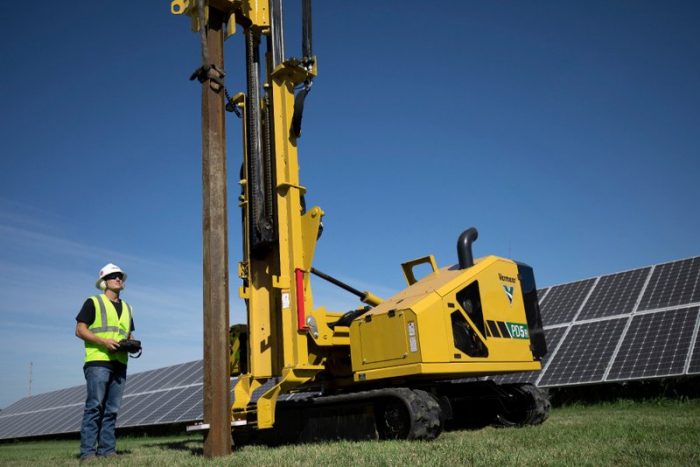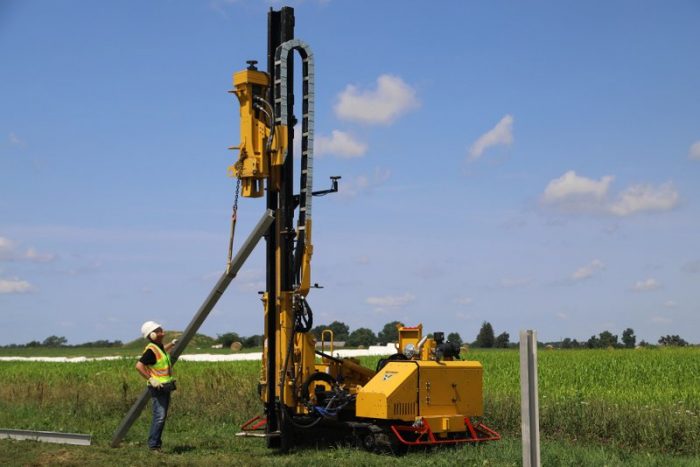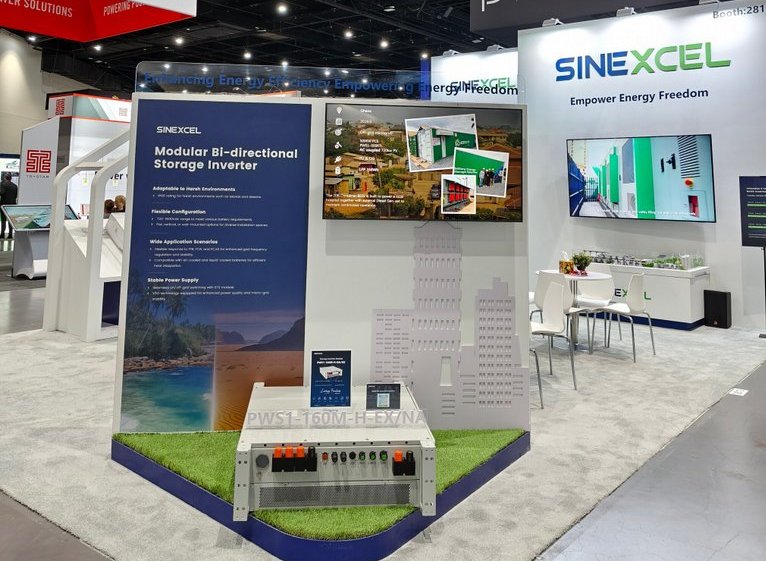Developing pile drivers and technology for the solar industry

Pile drivers are a go-to machine in the renewable energy market for the construction of ground mount solar projects. And, as construction in this niche application has grown exponentially in the last decade, contractors have begun looking for alternatives to the larger, traditional pile drivers. This has led them to approach brands they already know and trust for help.
Developing a pile driver for solar
“About 10 years ago, customers approached us and opened our eyes to what potential was in the pile driver market, especially for the installation of ground-mounted solar panels,” said Ed Savage, product manager at Vermeer. “They had been operating other Vermeer equipment to help connect solar farms to the utility grid. They appreciated the local support of Vermeer dealers and high-quality service we provide and commented that they wished they could get that same level of support and innovation on the pile driver side of their business.”
In solar panel installation, piles typically measure anywhere from 7 feet (2.1 m) to more than 25 feet (7.6 m) long. “There were already pile driving attachments on the market that contractors could put on a skid steer loader or an excavator to accommodate that size range, but the accuracy and productivity with these options is not what it needed to be for this type of application,” said Savage.
So, Vermeer created a range of pile drivers that are specifically designed to meet the demands of commercial solar contractors and the expansive solar fields they install.
Choosing the right model
According to Savage, solar contractors typically want to average 150 to 200 piles driven per day per machine. And, large-scale solar farms can have hundreds of thousands of piles to be driven. This makes efficiency and accuracy so important because contractors don’t want to have to go back and redo anything. On installation projects of any scale, it’s about efficiency — the quicker they’re in and out, the better it is for overall productivity.
To respond to the market demand for pile drivers that can quickly and efficiently get this type of work done, Vermeer has developed two models: The PD5 pile driver can do up to 15-foot (4.6-m) long piles, and the PD10 pile driver can do up to 20-foot (6.1-m) long piles. “Choosing the right pile driver model will depend on how fast and how many piles a contractor wants to drive in a day,” finished Savage.
Project considerations

According to Savage, project type makes a difference when choosing the right pile driver for the job.
There are two basic types of ground mount solar projects: distributed (point-of-use) and utility scale projects. If a contractor plans to focus on distributed projects, they would want to consider a smaller pile driver like the PD5 for its light footprint allowing smaller transport vehicles. The quick setup/teardown feature of the PD5 lends itself well for doing multiple small distributed sites per day. If a contractor plans to focus on utility scale projects, they could consider either the small or mid-sized pile drivers due to having multiple units on the same jobsite for a number of days.
Another consideration is the mode of operation that best fits the customers. Many pile drivers have a fully remote-operated machine, while others are a manually operated machine. Also, units like the Vermeer PD10 are available as either a ride-on machine or fully remote-operated machine.
Productivity features
According to Savage, differentiating factors among pile drivers in the market for the solar industry specifically to consider: machines with lightweight, compact footprints, as well as their ability to move from pile to pile accurately and efficiently.
For example, the precise ground drive control on both of these Vermeer models is specifically engineered to enable operators to spend less time installing each pile and move efficiently from one pile to the next. “We worked with GPS providers to develop onboard technology that makes it possible for Vermeer pile drivers to help reduce surveying time and install piles at the correct location, depth and plumb” said Savage. “Our integrated control system offers the operator a variety of machine information, including pile plumb and height, to assist with getting each drive lined up and executed correctly.”
Dealer support
Contractors also must consider the level of dealer support they can receive wherever a job may take them. “Since many solar-installation contractors travel frequently, equipment service and support are critical to their overall efficiency,” said Savage, “Whether it’s California, Minnesota, Florida or Texas — they’re all over the place. So, they cannot wait week after week to get parts and service from the factory that’s nowhere near them.”
He finished, “As solar started really taking off, these crews were on their own, more or less. They need local support and a dealer network that can provide that.”
Amy Olsen is product marketing lead at Vermeer. Contact your local Vermeer dealer for more information on machine specifications.





Comments are closed here.